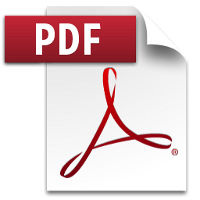 National Road Traffic Act, 1996
National Road Traffic Act, 1996
R 385
Mine Health and Safety Act, 1996 (Act No. 29 of 1996)RegulationsGuideline for a Mandatory Code of PracticePrevention of Fires at MinesPart A : The Guideline1. Foreword |
| 1.1 | Fires in mines or excavations, such as a transportation tunnel, is a serious fire hazard that could result in the loss of life and revenue for the enterprise concerned. Mines contain significant amounts of fuel sources such as flammable material, fuels, lubricants, timber, rubber, plastics, paint and packaging materials. Coupled with these are numerous ignition sources such as self-heating of coal, flame from oxy-acetylene cutting and welding equipment, sparks, electrical short-circuits, machinery hot surfaces and friction that can initiate a fire. |
| 1.2 | Basic fire theory suggests that fires occur when three constituents are present simultaneously: a fuel source, an ignition (heat) source and oxygen (air). At mines, oxygen will normally be present in the air as it is required to sustain human life and enable the operation of combustion engines. |
| 1.3 | The identification of fire hazards should focus on the following key considerations: |
| 1.3.1 | The presence of fuel sources such as combustible materials, flammable substances, volatile chemicals, etc. |
| 1.3.2 | The presence of ignition or heat sources such as hot surfaces on equipment, electrical sparks, naked flames, explosives, exothermic chemical reactions, etc. |
| 1.3.3 | A chemical chain reaction in metallic fires known as class D fires. |
| 1.4 | The fire risk in any mine has to be managed properly. This is achieved by an assessment of the risks involved, the monitoring of fire risk controls, good mine and ventilation system design, equipment and material selection as well as the preparation, implementation and enforcement of formal appropriate mine-specific standards. |
| 1.5 | The South African mining industry has in the past experienced several underground fire incidents. Underground fires are particularly dangerous due to the confined nature of excavations, the quantity of smoke and noxious fumes produced in relation to the limited quantity of fresh air present and the restricted ability to escape quickly from the mine. |
| 1.6 | Between 2019 and 2023, there were 584 fire incidents that were reported. The majority of the fire incidents were reported from the Northern Cape, Mpumalanga, Limpopo and North-West: Rustenburg regions. These incidents occurred because of mobile machinery, conveyor belts, electrical cables, substations, cutting and welding and spontaneous combustion. The majority of the fire incidents were reported as unclassified fires. |
| 1.7 | MHSA regulations pertinent to the prevention of underground fires include: |
| 1.7.1 | Regulation 5.1(1)(b) requires an employer to ensure that a competent person reports to the employer, at appropriate intervals determined in accordance with the mine’s risk assessment, on the adequacy of measures in place to prevent, detect and combat the start and spread of mine-fires. |
| 1.7.2 | Regulation 8.9(3) requires an employer to take reasonably practicable measures to prevent persons from being exposed to flames, fumes or smoke arising from a conveyor belt installation catching fire, including instituting measures to prevent, detect and combat such fires. |
| 1.7.3 | Regulation 9.1(2) requires an employer, where the risk assessment indicates a significant risk of a fire and/or explosion and/or toxic release, that could lead to an irrespirable atmosphere or an atmosphere immediately dangerous to life or health, to provide an early warning system or systems at all working places. |
| 1.7.4 | Regulation 16.1(1) requires an employer to ensure that a competent person reports to the employer, at appropriate intervals determined in accordance with the mine’s risk assessment, on the adequacy of escape and rescue procedures at the mine relating to explosions, fires and flooding. |
| 1.8 | The main aim of this guideline is to provide employers with a framework to assist in the preparation of a COP on the fire prevention measures at a mine to reduce significant risks associated with fires and the protection measures to reduce damage. |